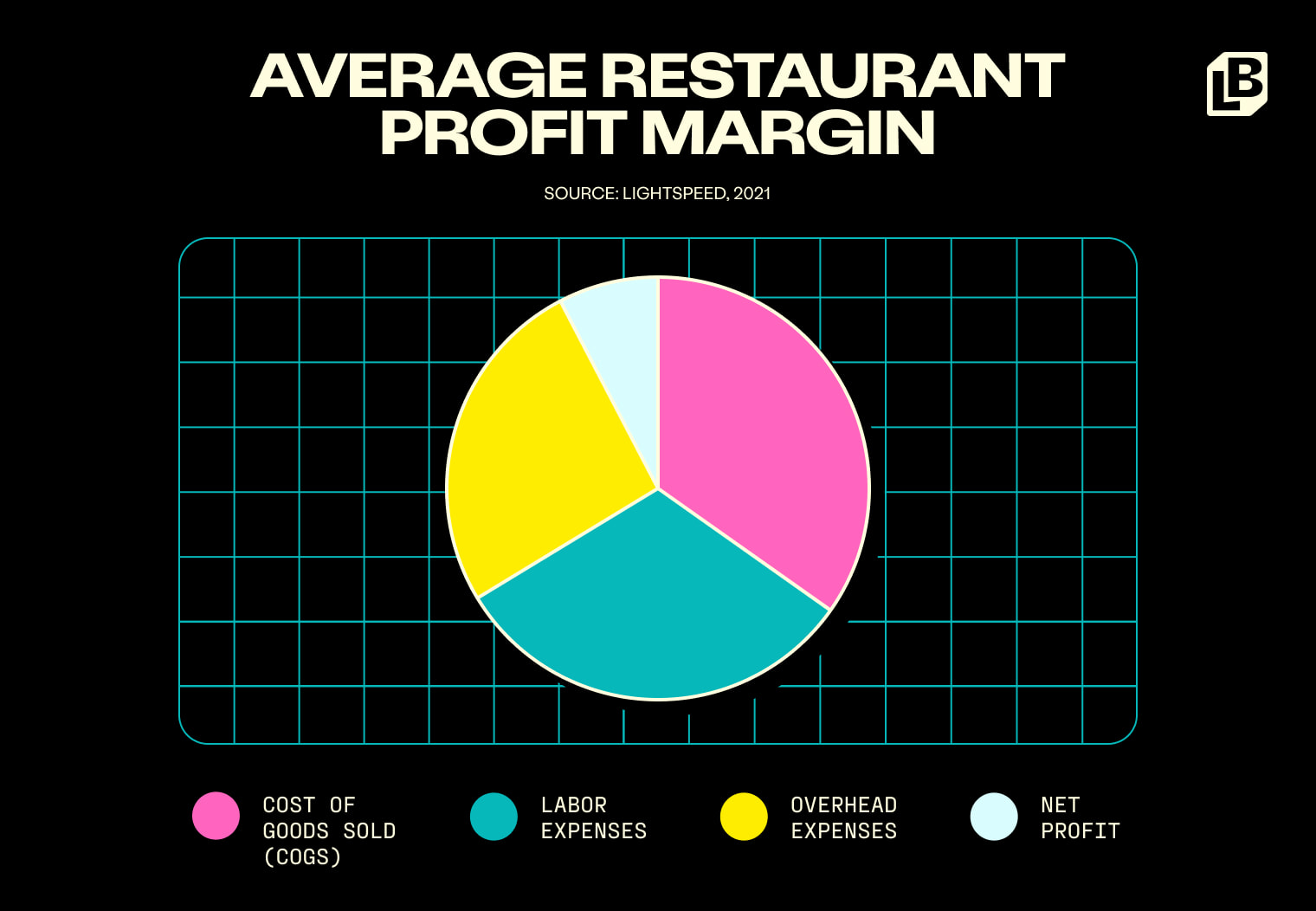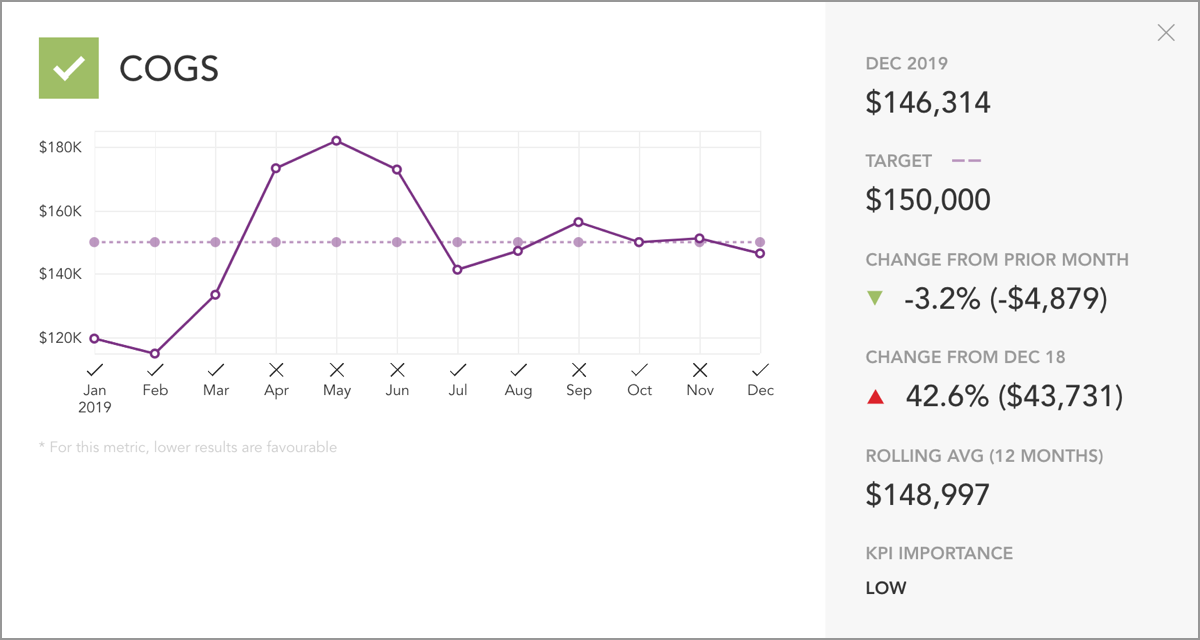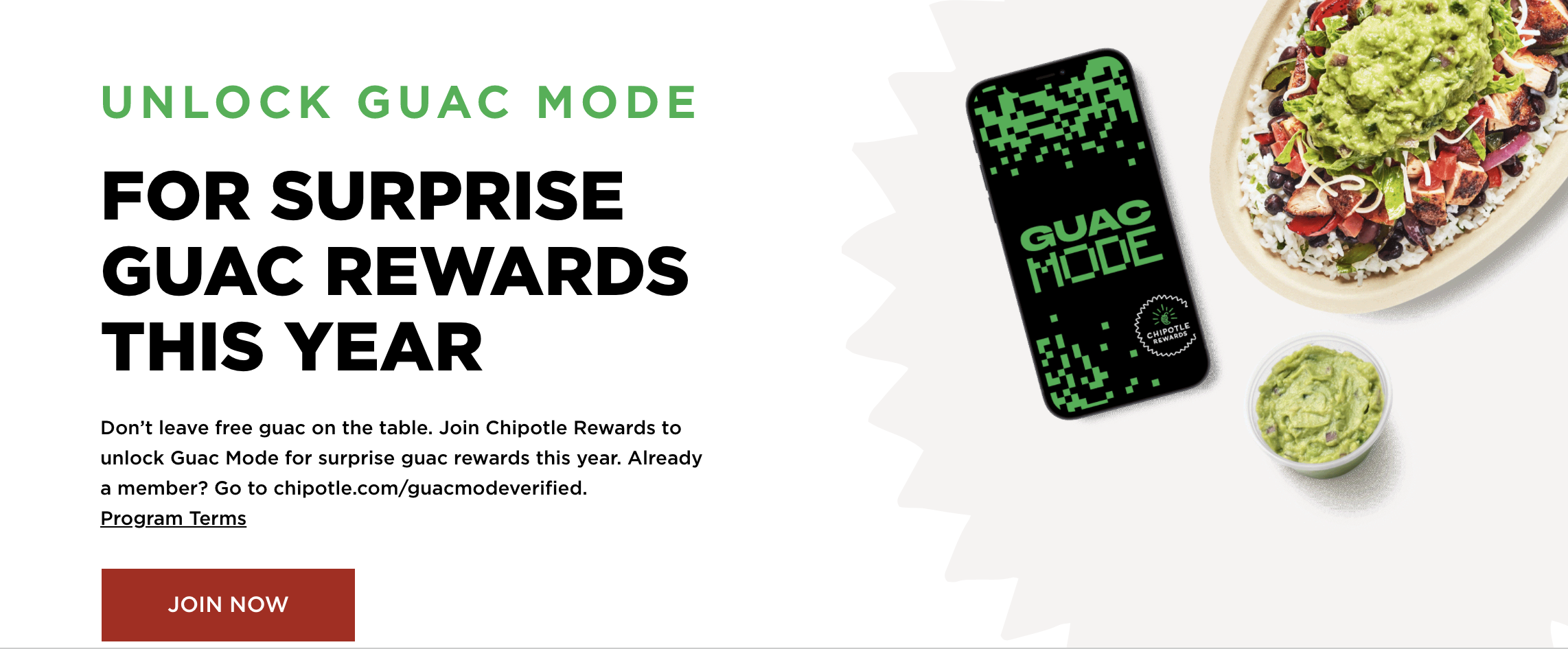Check Out This Guide:
Share
- Jump to:
Opening a restaurant and running a successful business is the dream of many foodies and entrepreneurs. However, this bucket list goal can easily become clouded by the reality of the situation: opening a restaurant is incredibly challenging, and keeping it running is even more difficult.
After all of the planning, executing, and the long, hard hours, what really determines if a restaurant is going to succeed or not is its profit margin. Often regarded as one of the most important metrics in the restaurant industry, profit margins are crucial to keep track of, especially in the first few years of business.
Overall, restaurant profit margins are rather tight, especially compared to other industries. For new restaurants, it is important to be realistic about profit margins and set conservative goals. Novice restaurateurs will need to be prepared to take on large amounts of debt while not making a profit in the first few years of their business.
Although these statistics may appear depressing or stressful, there are steps you can take to ensure your restaurant business is on track to increase its profit margins over time.
What is the Average Restaurant Profit Margin?
On average, profit margins in the restaurant industry range from 3 to 5 percent, but can sometimes fall between 0 to 15 percent depending on the restaurant business. Profit margins in the restaurant industry once fell between 15-20 percent, but unfortunately, this has been steadily declining over time.

Cost of goods sold (COGS), labor costs, and overhead expenses are the top three costs associated with running a restaurant, leaving a small net profit. Source: Lightspeed, 2021
When analyzing your restaurant’s profit margins, it is important to understand the differences between the gross profit margin and the net profit margin. Gross profits help you understand how efficient your restaurant is, while net profit margins give restaurateurs an idea of their business’s profitability and success.
Gross profit margin.
The gross profit margin is the amount left over after the cost of goods sold (CoGS) is subtracted. This number can be helpful for calculating how efficiently your restaurant is using ingredients and goods.

[Selling Price – CoGS] ÷ Selling Price = Gross Profit
Net profit margin.
This is the best way to calculate how much your restaurant is actually making, and if your restaurant is a success. To determine the net profit margin, all of your restaurant’s expenses are added up and then subtracted from your gross profit. Depending on your restaurant type, expenses may include rent or mortgage, payroll, utilities, taxes, and goods.

Total Revenue – Total Expenses = Net Profit
Average Profit Margins by Restaurant Type
Different types of restaurants and foodservice operations typically have varying ranges when it comes to average profit margins. Although the ranges are similar when comparing virtual restaurants, full-service restaurants, fast-casual restaurants, and food trucks, the margins do vary by a few percentages. When determining what type of restaurant to open, considering the varying profit margins may be a good place to start.
Virtual restaurants.
Also called cloud kitchens or ghost kitchens, virtual restaurants have lower rent, less staff, and fewer startup costs. Despite this, this type of operation has the capacity to put out a high volume of orders. The explosion of virtual kitchens is relatively new in the restaurant industry, and therefore, there is not much hard data that states the average profit margins for this type of restaurant. Due to a low overhead rate and low labor costs, a well-managed and thoughtfully designed virtual kitchen has the capability to make the high end of average profit margins.
Full-service restaurants.
Full-service establishments typically have the tightest profit margins. In these operations, labor costs are higher due to a more involved customer experience and specialty training in some situations. Ingredients and cost of rent (depending on the location) are also generally higher. Therefore, profit margins for this type of restaurant typically fall between 3-5%.
Fast-casual restaurants.
Also called fast food or quick-service restaurants, fast-casual operations will find themselves with slightly higher profit margins. This type of restaurant has lower labor costs, cheaper ingredients, and a faster table turnover rate. Fast-casual operations normally have profit margins between 6-9%.
Food trucks.
Similar to virtual kitchens, food trucks have the benefit of low overhead costs and a much smaller staff to pay. For this type of restaurant, bad weather and the location of where it is parked will indubitably have an effect on profits; however, all types of restaurants also experience slow days. Like fast-food restaurants, food trucks typically have average profit margins between 6-9%.
How to Improve Average Restaurant Profit Margin
Before you begin to improve your restaurant’s average profit margin, you’ll need to consider everything that influences this. Think of your restaurant as a machine, and the different components - like costs of goods, labor costs, and overhead costs - as cogs and pieces of the machine. The profit margin can be thought of as the “output”; if you are not getting the results you want, you’ll need to go in and make adjustments to the cogs and pieces of the machine to improve its efficiency and end result.
Monitor and understand your metrics.
Every restaurant owner should be checking key performance indicators. Most check a few of these metrics from time to time; ideally, multiple key performance indicators should be checked on a regular basis. Different metric categories include sales and profitability, customer experience, and marketing. In these categories, specific indicators include cash flow, labor costs, and online customer reviews. Checking these metrics often will ensure that you have a comprehensive picture of how your restaurant is faring, and which metrics can be improved upon.
After becoming cognisant of these metrics, it's important to learn how to understand how they affect your bottom line. Are poor online customer reviews taking a toll on repeat visitors and new customers? Is your virtual kitchen’s social media engagement low, resulting in less than desired traffic?

Tracking CoGS overtime can give insight into when costs go up, and why this is. Source: Fathom HQ, 2020
Know your cost of goods.
CoGS, or the cost of goods sold, is the cost of creating your restaurant's menu items. Ingredient and food costs are some of the greatest expenses for restaurants, so this indicator is an important one to track frequently. When analyzing COGS, also consider portion sizes and an item’s menu price. Can these be adjusted appropriately to increase profits while still keeping customers happy?
Staying on top of inventory management can assist with keeping the cost of goods within your budget by reducing food waste and unnecessarily ordering extra items. This can be completed manually, but using restaurant tech like kitchen management software streamlines and automates the inventory and ordering process.
Understand labor costs.
Different types of restaurants will have varying labor costs. Food trucks and virtual kitchens have fewer team members and therefore benefit from lower labor costs. Full-service restaurants need larger teams, including kitchen staff, bartenders, servers, and hosts. Quick service establishments may have fewer team members than a full-service restaurant, but will likely experience high turnover rates, which can quickly bump up labor costs.
To keep labor costs within the budget, use software to keep track of hours and schedule shifts. Be aware of early and late clock-ins, and take notice of times when the restaurant may be overstaffed. If you are unable to pay staff members more, consider offering extra benefits to keep the team morale high - discounts, days off, and team outings.
Know your overhead.
Do you know what goes into your restaurant’s overhead costs? Your overhead includes rent, salaries, advertising, insurance, taxes, licenses, and utilities - it includes any costs that are not labor or material expenses. To calculate the overhead rate as a percentage of sales, add up all of these business costs in the period of time you are analyzing, and then divide by total monthly sales during this period. To express this number as a percentage, multiply the total by 100.
In straightforward terms, the lower your overhead costs are, the higher your profits will be. Once you have calculated your overhead rate, you can begin to strategize on how to bring this down.
Increasing Your Restaurant Profit Margin
Your restaurant’s profit margin is not just a result of how many orders you fulfill, but is affected by many different factors. For example, your sales volume may be incredibly high during a lunch hour rush, but your overhead rate might be astronomical, resulting in little profit.
Depending on what type of restaurant you operate, certain factors will have more of an influence than others. A virtual kitchen’s profit margins will be greatly affected by its online and social media presence since this type of operation does not have a visible storefront. Full-service and fine dining establishments require well-trained employees that can upsell and increase average order totals.
Invest in restaurant technology.
To best understand your restaurant’s data and profit margins, investing in top-of-the-line restaurant technology is key. You may already have a point-of-sale (POS system) and some type of kitchen management platform, but these technologies should do more than just take and display orders. Modern-day restaurant tech has the capability to provide on-demand, real-time data, and detailed reports. Manually accessing this level of data and detail, can be incredibly time-consuming, but with the right technology, restaurant managers and owners can obtain this information instantly.
Have a great website.
Simply put, a great website that is easy to navigate results in more customers and orders. Your restaurant’s menu should be prominent, straightforward, and up to date. Once a customer is on your site, the aesthetics and appeal of your restaurant’s website should encourage them to order from you. Most customers look up a restaurant online - approximately 77 percent - before deciding to dine there. Consider highlighting dietary preferences and restrictions you cater to, as well as happy hour and other specials.
Ensure you have online ordering.
A customer is on your site and decides that they do indeed want to order food from your restaurant - but they want takeout rather than a sit-down meal. In order to accommodate this customer, ensure you have easy to access online ordering on your site. You could use third-party platforms like Uber Eats or GrubHub to complete online orders, but this results in a quick and sharp decline in profits made per order. Owning your restaurant’s online ordering is convenient for customers, and results in higher profits per order.
Invest in social media and PR.
A website is a great place to start, but in this digital day and age, it is the bare minimum for creating an online presence. Social media platforms like Instagram and Tik Tok are a great way to reach new customers from younger demographics, while a Facebook page is more accessible to older generations. Having an account on different platforms and posting consistently is a sure-fire way to get more eyes on your restaurant business.
Restaurateurs and owners wear a lot of hats, but PR and social media may not be their strong suit. If this is the case, and your restaurant has the budget for it, consider hiring someone to run your restaurant’s social media.

Chipotle’s loyalty program tracks customer points via its app, offers free items upon sign-up, and birthday bonuses. Source: Chipotle, 2022
Offer customer loyalty.
Customers want to support restaurants they love, and loyalty programs encourage them to do so. In a study conducted by Invesp, well-done loyalty programs can account for as much as 20 percent of a company’s profits. Offering customer loyalty can be simple - your restaurant can offer punch cards or email marketing promotions. Or, custom apps can be used to track points and rewards.
Train and hire good employees.
With the “great resignation” and labor shortages in the restaurant industry stemming from the pandemic, finding great, long-term employees has never been so challenging
In full-service and high-end restaurants, waitstaff can have a direct effect on profits. If servers are well-trained, they will be able to successfully upsell food and beverage items, increasing average order totals. Specialty and alcoholic drinks have high-profit margins, and encouraging the purchase of appetizers and drinks can add up quickly. Experienced servers and hostesses will also know how to turn tables over faster and serve more guests.
In 2019, the annual restaurant employee turnover rate reached an all-time high of 75 percent. High turnover rates are costly because the hiring process takes time, and it is expensive to train a new employee. Often, loyal customers also become accustomed to seeing certain employees, and expect this when dining in your restaurant.
The Importance Of Restaurant Profit Margins
Opening a restaurant is a beast on its own, but operating a profitable restaurant is a Herculean task. It seems like the odds are stacked against restaurateurs; the costs of goods are higher due to inflation, it can be difficult to find and train great employees, and profit margins have been steadily dropping over the years. Despite these hurdles, restaurant managers and owners can take their business's fate into their own hands by paying attention to labor costs, cost of goods, and the total overhead rate. If these numbers aren’t where they should be, specific factors, like restaurant tech, your website, social media, and your employees can be honed in on and improved upon. Being cognizant and proactive about everything that affects your restaurant’s revenue can be what shifts your profit margins from a meager 3 percent, to a robust 15 percent or higher.